



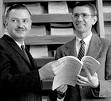
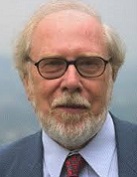

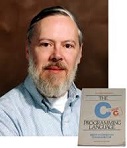


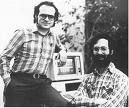











TLW's Softwarescope™ (Software Historyscope) |
By T.L. Winslow (TLW), the Historyscoper™ |
© Copyright by T.L. Winslow. All Rights Reserved. |
Original Pub. Date: Feb. 15, 2019. Last Update: June 7, 2022. |

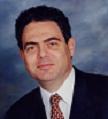


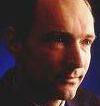

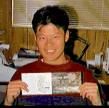


Westerners are not only known as history ignoramuses, but double dumbass history ignoramuses when it comes to the history of Software. Since I'm the one-and-only Historyscoper (tm), let me quickly bring you up to speed before you dive into my Master Historyscope.



The modern Tower of Babel? In 1823 English mathematician Charles Babbage (1791-1871) invents the first working digital calculating machine, the Difference Engine to calculate tables of functions by finite difference methods. In 1833 he invents the Analytical Engine, the first large scale digital calculating machine (computer); he never gathers enough funds to build it; in 1991 it is built according to his specs, and works. In 1842-3 Augusta Ada King, Countess of Lovelace (1815-52), daughter of Lord Byron (1788-1824) tr. a memoir by Italian mathematician Federico Luigi, Count of Menabrea (1809-96) on the Analytical Engine of Charles Babbage, publishing the first known computer program, which calculates Bernoulli numbers; really written by Babbage?


In 1954 an IBM team led by John Warner Backus (1924-2007) of Dartmouth College develops the FORTRAN (Formula Translation) computer language for scientific use, which works especially well with floating point calculations; it is released commercially in 1957. In 1959 as an alternative to FORTRAN, "Amazing" Grace Murray Hopper (1906-92) of the U.S. Navy inflicts, er, invents the gawd-awful COBOL (Common Business-Oriented Language) computer language for business programming; the first official specs are pub. in Apr. 1960; on Sept. 9, 1947 she discovered a moth stuck in relay #70 panel F in the Mark II Computer at Harvard U., and invented the terms "computer bug" and "debugging"?; the moth ends up in the Smithsonian Inst. Nat. Museum of Am. History; she ends up getting promoted to er, rear adm.

On Jan. 9, 1958 Am. statistician John Wilder Tukey (1915-2000) coins the term "software" in an article in the Am. Mathematical Monthly, with the soundbyte that it is "at least as important to the modern electronic calculator as its 'hardware' of tubes, transistors, wire, tapes and the like"; the term hardware was coined by Paul Niquette in 1953, but this is the first time it's used in print.
In 1958 the ALGOL (Algorithmic Language) 58 computer language is developed in Zurich, Switzerland by an internat. committee to avoid perceived problems with FORTRAN, becoming the first with nested function definitions and lexical scope, and the first with a formal language definition, the Algol 60 Report, which introduces the Backus-Naur Forms; ALGOL 58 is followed by ALGOL 60 and ALGOL 68.
In 1960 the PLATO (Programmed Logic for Automated Teaching Operations) computer-assisted education system is built at the U. of Ill. by Donald L. Bitzer, pioneering online forums, message boards, e-mail, chat rooms, picture languages, instant messages, multiplayer games, and remote screen sharing; it is shut down in 2006.

On May 1, 1964 (4:00 a.m.) Dartmouth math. profs. Thomas Eugene Kurtz (1928-) and Hungarian-born John George Kemeny (1926-92) run their first program written in the (in)famous BASIC (Beginner's All-Purpose Symbolic Instruction Code) computer language, which runs with an interpreter, allowing full floating point math, but also implements loops using the interpreter, keeping them way slower than assembly language.
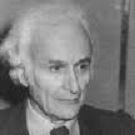
In 1966 the Bohm-Jacopini (Böhm-Jacopini) Structured Program Theorem is pub. by Italian computer scientists Corrado Bohm (Böhm) (1923-) (whose 1951 dissertation describes the first meta-circular compiler, written in its own language) and Giuseppe Jacopini, proving that any function can be computed by a program sans go to statements if there are enough local program location variables, turning on computer scientists Edsger W. Dijkstra et al., who begin a campaign to ban the go to completely.
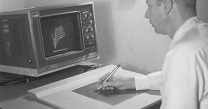
In 1966 Gabriel Groner, Tom Ellis et al. of Rand Corp. develop the Graphical Input Language (GRAIL) software system to try and recognize handwriting using a Rand Tablet.
On Apr. 23, 1968 Martin A. Goetz of Applied Data Research receives the first U.S. software patent (#3380029), causing a flood of applications, even though the very idea of patenting software infringes on the age-old tradition that mathematical algorithms are in the public domain; the U.S. Supreme Court decides the issue in ?.
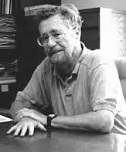
In 1968 Dutch computer scientist Edsger Wybe Dijkstra (1930-2002) pub. Go To Statement Considered Harmful, advocating the total elimination of go to statements ("spaghetti code") in high level languages in favor of structured programming (which he c


In 1968 Am. computer scientist Edward Albert Feigenbaum (1936-) and Am. molecular biologist Joshua Lederberg (1925-2008) of Stanford U. develop DENDRAL, an expert heuristic software AI system for the identification of chemical substances based on the results of spectrometric analysis.

In 1970 Swiss computer scientist Niklaus Emil Wirth (1934-) pub. the simple and elegant ALGOL-based Pascal (originally ALGOL-W) programming language, which later becomes popular for PCs, but is abandoned as PCs become more powerful, after which it survives as a teaching language for newbies; "Whereas Europeans generally pronounce my name the right way, as Nick-Louse Veert, Americans invariably mangle it into Nickel's Worth. That is to say that Europeans call me by name, but Americans call me by value."

In 1972 Bell Labs engineer Dennis Ritchie (1941-2011) creates the C Programming Language for the Unix operating system; it goes on to become the language of choice for PC programmers.
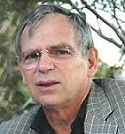
In 1972 French computer scientist Alain Colmeraurer (1941-) of Marseille develops the Prolog (Programming Logic) computer language for artificial intelligence (AI) applications.

In 1972 Am. computer scientist Alan Curtis Kay (1940-) develops the object-oriented computer language Smalltalk, based on Simula, complete with a GUI with windows and icons.

In 1972 UCB asst. math prof. Stephen Arthur Cook (1939-) proves that the Boolean Satisfiability Problem in formal logic is NP-Complete, solvable in nondeterministic polynomial time; too bad, he leaves open the question of whether complexity classes P (solvable in polynomial time) and NP (solvable in nondeterministic polynomial time) are equivalent, and the math dept. at UCB stinks itself up by refusing to give him tenure, after which he moves to the U. of Toronto.

In 1973 Am. computer scientist Gary Arlen Kildall (1942-94) develops PL/M (Programming Language for Microcomputers) the first high-level programming language for microcomputers, and uses it to create the CP/M (Control Program for Microprocessors) operating system for the Intel 4004 microprocessor by 1976, founding Intergalactic Digital Research Inc. in 1974 to market it.
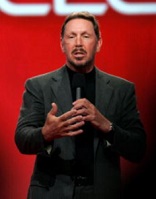

On June 16, 1977 Software Development Labs in Redwood Shores, Calif. is founded with $1.4K by ex-Ampex employee Lawrence Joseph "Larry" Ellison (1944-) and Robert N. "Bob" Miner (1942-94), who develop Oracle, the first commercially viable computer relational database language, and on June 16, 1977 found Software Development Labs., followed on Oct. 29, 1982 by Oracle Systems, which goes public on Mar. 12, 1986 after achieving $55M sales, which zoom to $584M in 1989.
In 1978 the U.S. Dept. of Defense High Order Language Working Group, formed in 1975 to invent a single computer language to replace the 450+ high order languages in use for defense projects, led by Jean David Ichbiah (1940-2007) of Honeywell Bull in France et al. settles on Ada, named after Lord Byron's daughter Lady Ada Lovelace (1815-52), allegedly the first programmer (Charles Babbage really did it?); it becomes mandatory to use in 1983, but too bad, it's an uncool kitchen sink flying domesticated turkey language that ends up as a billion dollar boondoggle as the commercial sector refuses to accept it and develops far better languages, causing the mandate to be removed in 1997, leaving scads of Ada programmers out in the cold as a poor sister unemployable minority group? - if they'd only asked TLW?

In Sept. 1979 the $100 spreadsheet program VisiCalc, by Software Arts Inc., founded by Jewish-Am. MIT pals Daniel Singer "Dan" Bricklin (1951-) and Robert M. "Bob" Frankston (1949-) is introduced for the Apple computer, becoming the first "Killer App" that causes business persons to buy the computer to run the software, and soon becomes available on the TRS-80, Commodore PET, and Atari 800; by 1985 they sell 800K copies; in 1986 it is bought by Lotus Corp.

In 1979 Danish computer scientist Bjarne Stroustrup (1950-) develops the C++ (C with Classes) programming language - already passing the U.S. govt. Ada turkey up?





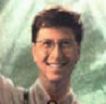




What do you have stamped on your forehead, the word Dopeface? The biggest business swindle of the century, or, every fortune has a crime behind it, or, Big Think IBM is out-IBMed and all's fair in love and war? On Dec. 1, 1980 after IBM employee William C. Lowe (1941-2013) convinces CEO Frank Cary to assemble the "dirty dozen" to build it, IBM delivers its first prototype PC, the IBM Model 5150 PC to its Seattle, Wash.-born Harvard-dropout designer William Henry "Bill" Gates III (1955-), owner of Monopolysoft, er, Microsoft, who got their foot in the door via his mother Mary Maxwell Gates (1929-94), first woman chmn. of United Way, who talked fellow board member John Roberts Opel (1925-2011) into giving him a sweetheart contract allowing Microsoft to retain all rights to its software, after which Bill talked the IBM lamers in Raton, Fla. into not patenting the design (based on Intel microprocessor chips), but instead to pitch it as an "open architecture" so that add-on hardware cos. will be attracted to it and hopefully every home and office in the world will end up with one one day; it is featured on the cover of issue #1 of PC Magazine; one little problemo, no operating system, and although he plans to supply his rinky-dink BASIC interpreters for it, Gates has never written a line of operating system code, so to make the deal go he does what he doesn't like and tells the IBM execs about competitor Gary Kildall (1942-94) of Digital Research, developer of the popular CP/M operating system for microprocessors, who has a Ph.D in computer science (vs. Gates, who is a college dropout), and owns all rights to his software; too bad, Killall, er, Kildall screws up his deal-of-the-century with them, allegedly standing up its reps to go flying, but not really, he just doesn't understand that Jaws is in the water nearby, and he has no lawyer daddy to help guide him through negotations, and is too easygoing and honest to believe he would be stolen blind, settling for an easygoing handshake deal and totally failing to see that just about everybody in the world will indeed end up having a PC one day; too bad, Big Blue IBM is also outfoxed for failing to see that mainframes (their main biz) are going to be made obsolete by PCS, and that opening the architecture will help their sales only at first, after which IBM PC clone manufacturers will move in like a school of sharks, creating a feeding frenzy and driving the margins down until only low-paid Third World workers will be making them, forcing high-price IBM out of the PC biz, while all PCs will have to host the operating system software, which thanks to internat. copyright laws can be squeezed for exorbitant profits forever, since it's just ones and zeroes and virtually all profit, and application software depends on it, making a new operating system design almost impossible; hearing that Kildall didn't shut him down with ironclad legal agreements in triplicate, on July 27, 1981 Jaws Gates takes his main chance and purchases the 4K-line QDOS (Quick and Dirty) Operating System (AKA 86-DOS) from software pirate, er, developer Tim Paterson (1956-) of nearby Seattle Computer Products (who reverse-engineered Kildall's software) for $25K, then changes a few lines of code, renames it to PC-DOS and MS-DOS, and tenaciously sucks the chrome, er, courts IBM via his board member mother until they sign an ironclad deal to market it with their PCs, after which IBM introduces the IBM PC on Aug. 12, 1981; poor Kildall doesn't figure it out for a year, by which time he's locked out, and then he proves he's no Bill Gates by not immediately going to court to sue for trade secret and copyright infringement and owning Microsoft, instead accepting a deal to market his operating system in parallel with Microsoft's, at an unaffordable price which nobody wants, letting Gates walk away with the store and get rich on his work while the judge wonders when he's going to get a case and never does; later, as Microsoft's Magic Carpet takes off without him and flies to the highest heavens, Kildall becomes a bitter alcoholic and suffers an early death; meanwhile stingy zillionaire-in-the-making Gates jealously guards his magic carpet, using the endless bucks coming in to hire programmers right out of college to pump-up "his" code to millions of lines and forcing PC customers to buy endless upgrades and new versions, while hiring a large legal staff to zealously guard his copyright and trade secret rights in the fear that yet others will clone his software and undercut him; he never actually sells software, only licenses it to end-users to use on one PC at a time, with the right only to make a single backup copy, thanks daddy you're a great lawyer?; of course, IBM blows it even worse, since they could have cloned the software themselves and done it all in-house, but they're too honest to be accused of stealing?; Microsoft later pays Seattle Computer Products $925K to settle out of court for the Deal of the Century, and bows to U.S. Dept. of Justice pressure by making its license non-exclusive to allow for DOS clones, which they make hard to create by constantly revising the software in endless versions; meanwhile closes-his-eyes-while-shaving Gates doesn't offer Kildall even a tiny piece of his action, or admit that he's made enough and release the source code to the public to allow the millions of eager programmers out there to take it over and make it free, so the next Rockefeller is born, calling himself the world's greatest genius; within years Gates goes public and now it would be a crime to give away the corporation's magic carpet ride as a betrayal of the stockholders, and Microsoft wouldn't even want to hire Kildall as a consultant because the industry has moved on and Kildall is considered obsolete?; hooray for Capitalism, the good guy lost?; but we're not done; now Monopoly Soft Gates invites potential software competitors to create and market application software for the IBM PC, pretending not to be in that business, even selling them the support software (assemblers and compilers, so all the application software will say Microsoft Inside), while insuring that only his software is preinstalled before a customer gets the PC, while competitive application software is forced into an aftermarket, which is subject to massive illegal copying, allowing him to eventually buy them out, repackage their software work as his own, and have it preinstalled too, creating a total software monopoly, meanwhile busily sending legions of lawyers out to pressure software dealers into agreeing only to preinstall their cruddy software in case application developers get ideas, while he fools the govt. into not intervening because it looks like everybody is free to create superior software, even though in the face of the rigged game he's set up they can't give away, until they go bust, give up and sell out to him; the fact that consumers are mainly computer illiterate makes it super-easy to push inferior Microsoft weeny-written software on them and keeps them immune to technical reviews that try to tell the customers what is best, when the dopes see the Microsoft logo every time they boot their PCs up, so they can't say no to Big Brother? - looking back on it, TLW coulda reverse-engineered MS-DOS and given it to the public for free, so sue me, but so could have a lot of people, and now it's too late, call 1-800-software-steamer? The real question is: if the Jews run the world what did they have to do with this, other than when it went public and absorbed it into their worldwide monetary system? What if Gates had been a neo-Nazi?
Who's Stalin now? On Dec. 10, 1980 after the 1975 High Order Language Working Group stages a competition for a Commie-style 5-Year-Plan all-purpose computer language to stifle commercial competition, er, cut govt. costs, the U.S. Dept. of Defense pub. the new computer language Ada on the birthday of English brain babe Augusta Ada King, Countess of Lovelace (1815-52), daughter of Lord Byron (1788-1824), who allegedly pub. the first computer program in 1842-3 while working for Charles Babbage; the camel-designed-by-a-committee language is Pascal-descended, crockish, and difficult to use, becoming a multi-billion-dollar boondoggle, the PL/I of the 1980s; it is given the designation MIL-STD-1815 in honor of the year of Ada's birth; too bad, after tying to force the turkey onto defense programmers in 1987, they give up in 1997 after wasting gigabucks of taxpayer moolah; they should have just held a new competition each year for promising new languages, then let the market sort out the best on its own and not try dictating what to use?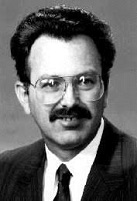
In 1980 Trenton, Ohio-based Martin Marietta Corp. programmer Cecil Wayne Ratliff (1946-) of Aston-Tate develops dBase I using the database program Vulcan I developed at the Jet Propulsion Labs in the late 1960s; it goes on to become the std. for PC filing systems.


In 1980 the WordPerfect 1.0 word processing program is introduced by Satellite Software Internat. in Provo, Utah, capturing more than half of the PC market until the clunkier Monopolysoft, er, Microsoft Word comes along; founders incl. Mormons Bruce Wayne Bastian (1948-) and his BYU instructor Alan C. Ashton (1942-).
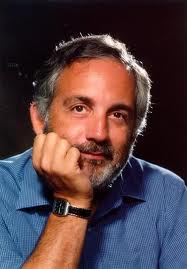

On Jan. 26, 1983 Lotus Development Corp., founded by Mitchell David "Mitch" Kapor (1950-) and programmer Jonathan Sachs (1947-) releases 1-2-3 spreadsheet software for the IBM PC to compete with Visicalc (1979) and Microsoft Multiplan (1982), featuring integrated charting/graphing and database capabilities (the 1-2-3 part), and becoming the IBM PC's first killer app, its speed coming from being coded in 8086 assembly language; 1-2-3 becomes the first PC software to be advertised on TV; IBM buys the co. in 1995 for $3.5B.
On Sept. 27, 1983 the GNU Project is announced on the Internet to coordinate the release of free software source code, allowing a charge for distribution.

In 1983 French-born U.S. immigrant Philippe Kahn (1962-) founds Borland Internat. to produce low-priced advanced PC programs, incl. TurboPascal, the first desktop organizer SideKick, Paradox database mgr., and Quattro Pro spreadsheet, and creating the "Borland non-nonsense license agreement" that allows the customer to use its products "just like a box", using only one copy at a time.
On Nov. 25, 1985 Microsoft announces the retail shipment of the hopelessly clunky 16-bit Windows 1.01, its first attempt at a multi-tasking graphical user interface (GUI) operating environment for the PC; Microsoft also releases its Excel spreadsheet program to challenge Lotus 1-2-3, featuring user-selectable fonts and cell design along with intelligent cell recomputation using Visual Basic for Applications and extensive graphing capabilities; too bad, it only works on Apple Macintosh until Nov. 1987, but Lotus is slow to release a Windows version, allowing Microsoft to crush them.

In 1985 the Eiffel object-oriented programming language is introduced by Bertrand Meyer (1950-) of France.

In 1985 after being laid-off from Boeing Co., engineer-yoga instructor John David McAfee (1945-) founds McAfee Software to produce anti-virus software for PCs; he sells out for $100M in 1995 after buying a mansion in Woodland Park, Colo. near Pike's Peak; by 2010 his fortune is down to $4M because of the bad economy.
On Apr. 2, 1987 Microsoft announces the OS/2 computer operating system, created in partnership with IBM, discontinuing support on Dec. 31, 2006; on Dec. 9 Microsft releases the Windows 2.0 16-bit GUI-based operating system, discontinuing support on Dec. 31, 2001.
On July 30, 1987 Microsoft acquires Forethought(founded 1983), developer of PowerPoint object-oriented bit-mapped software, becoming Microsoft PowerPoint, a slide projector capability for PCs; on Sept. 8 Microsoft ships its first CD-ROM application, MS Bookshelf (discontinued in 2000).
In Apr. 1988 Microsoft surpasses Lotus to become the #1 computer software vendor - in sales, not quality?

In 1988 Internet Relay Chat (IRC) is developed by Jarkko Oikarinen (1967-) of Finland.

In Mar. 1989 English-born Sir Timothy John "Tim" Berners-Lee (1955-) of CERN in Switzeland invents the World Wide Web (WWW), which starts out as a company-only net called Enquire Within Upon Everything, and is released globally in 1991, based on the HTML (HyperText Mark-Up Language), URLs (universal resource locators), and HTTP (HyperText Transfer Protocol); the French trans. World Wide Web as "Toile d'Araignee Mondiale"; the Hebrew letter waw is equivalent to 6, so WWW equals 666? - could it have something to do with the Swiss love of fondue?
In 1990 the U.S. govt.-run Arpanet is decommissioned, and the Internet takes over and goes commercial, immediately being swamped with porno Web sites, which make big bucks while driving millions of men crazy and ruining marriages and families?; on Sept. 10 Archie is founded by McGill U. student Alan Amtage, becoming the first Web search engine, by Veronica (1992) and Jughead (1993); by the late 1990s San Fernando Valley N of the Hollywood Hills in Calif. becomes San Pornando Valley as the porno industry moves in bigtime, generating billions in sales each year (until ?).
In 1990 the first rootkit is developed by Lane Davis and Steve Dake for the Sun Microsystems SunOS UNiX operating system, giving a hacker system administrator access to allow them to take over without being detected.
In 1990 "business-to-business publication" PC Magazine reviews Microsoft Windows 3.0 in its July issue, calling it "dazzling" and "the best implementation of a graphical environment for PC users available anywhere", and gives Microsoft Word for Windows an "Editor's Choice" designation among graphical word processors.
On May 13, 1991 Apple releases Macintosh System 7.0, with a corrected floating-point unit.

On Sept. 17, 1991 Linus Benedict Torvalds (1969-) of Finland (named after Linus in Peanuts or Linus Pauling) releases the Linux free open-source operating system on the Internet as an alternative to Windows, fighting a steep uphill battle to get people to use it when they already had to pay for Windoze whether they wanted it or not? - too little too late to stop Microsoft?
In 1991 BeOS is created by Be Inc. to run on BeBox hardware as a competitor to Mac OS and Microsoft Windows; too bad, it flops.

In 1991 Philip R. "Phil" Zimmermann Jr. (1954-) releases the first version of Pretty Good Privacy (PGP) personal computer software, bringing military-grade cryptography to the masses for free.
In Feb. 1993 Excite.com search engine (originally Architext) is founded by six Stanford U. students incl. Graham Spencer and Joe Kraus; they sell out to @Home on Jan. 19, 1999 for $6.5B.
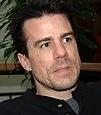
On Aug. 16, 1993 the Debian free Linux operating system (named after himself and his girlfriend Debra Lynn) is released by Ian Murdock (1973-).
Never fear, the World Wide Web is here, Or, I want you to take me out? In 1993 Mosaic, the first Web Browser is introduced by Netscape, who offers it for free; it later inspires Mozilla (moz://a) (Mosaic Killer and Godzilla) and Firefox.

The Year of Internet Search Engines? In Jan. 1994 Infoseek is founded, allowing Webmasters to submit Web pages for indexing; in Dec. 1995 Netscape begins using it as its default search engine; in Dec. AltaVista is founded, becoming the first to allow natural language queries; it is purchased in Feb. 2003 by Overture, which is acquired by Yahoo! in 2003; in Apr. WebCrawler is founded, becoming the first to index entire Web pages, selling out to AOL in June 1995; in Apr. Stanford U. grad students Jerry Yang (1968-) (born in Taiwan) and David Filo (1966-) found the Internet search engine Yahoo.com (Yet Another Hierarchical Official Oracle?) in a campus trailer, and incorporate next Mar. 2; in 1997 Yang becomes the world's youngest billionare at age 29; urls are entered manually by their staff, causing a long wait to get listed in return for higher quality search results for users; in July Lycos is founded, becoming the first with ranked relevance retrieval, selling out to Daum Communications of South Korea in Oct. 2004; meanwhile Justin Hall of Swarthmore College starts an online diary called "Justin's Links from the Underground", becoming the first blog; in 1997 Jorn Barger coins the term "weblog"; Peter Merholz coins the short form "blog".
On May 26, 1995 Bill Gates sends a memo to his top execs telling them that the Internet is now Microsoft's top priority; on Nov. 22 (JFK assassination day) Microsoft unveils Internet Explorer 2.0; on Dec. 7 Gates unveils his Internet strategy to the public at an all-day session, causing millions to fear yet another monopoly in the making.
In Jan. 1996 the BackRub search engine is founded by the future founders of Googol to rank pages based on backlinks on other pages; Inktomi Hotbot is founded in May, selling out to Yahoo! in Dec. 2003 for $235M.
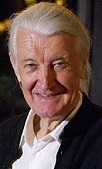
In 1996 Microsoft adds the Verdana and Georgia fonts to Windows, designed by British-born Matthew Carter (1937-).
In 1997 the Dot-Com Boom and Bust (Bubble) begins, with new cos. sprouting up and floating stock on little more than a Web site and an angle (ends 2001); despite big bucks invested by dopes, a string of spectacular dot-com flops results, incl. eToys.com, MVP.com (sporting goods), and Go.com (Disney); meanwhile the phenomenal growth of the World Wide Web leads to domain name speculation and instant wealth without needing big investment just by selecting a likely name, e.g., sex.com (sold for $13M in 2010), whitehouse.com, beer.com, pizza.com, and roses.com.
On May 15, 1998 Microsoft releases Windows 98, selling 1M units in 1 mo.

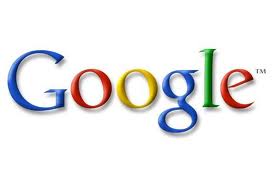

On Sept. 7 , 1998 Stanford U. grad students Sergey Mikhailovich Brin (1973-) and Lawrence Edward "Larry" Page (1973-) (who built an inkjet printer out of Legos in college) found the search engine Web site Google in a garage in Menlo Park, Calif. with a staff of four people, originally calling it Backrub because it analyzes Web site links, then changing it to Google after the word Googol, coined in 1920 by Am. mathematician Edward Kasner (1878-1955); they base their thesis on the project; despite a crowded field of well-financed search engine sites, they find that a sucker trick of hiding the paid advertising from the user by making advertisers pay for the order their sites come up in listings, rather than the obvious but annoying approach of thumbnail aids that pop up on the search screens is a winner (despite the result that all search results are skewed by the rich?), making them go #1 and later turning them into 20-something billionaires with a dot.com that has little revenue and no real product, patent, or creativity behind it, but zillions of mindless eyeballs, who seemingly never ask for a CD or DVD of the search engine database so that they don't have to keep connecting with it every time they need a dollop of info. - the Internet helps a few amass huge fortunes, but makes nada for the little guy?
In 1998 Google files U.S. Patent #6,285,999, titled "PageRank System", and uses it to create a monopoly in Internet searching, making the idea of patenting software seem lamer than ever, going on to get venture funding from Sequoia Capital in 1999.
On Jan. 1, 2000 global fears of the Y2K Computer Bug, date-wraparound glitches that could immobilize or destroy the world prove groundless after many software firms rake in big bucks supposedly programming preventatives; as much as $100B was spent in the U.S. to fix it; meanwhile the millennium celebrations go on as scheduled worldwide.
On Feb. 17, 2000 Microsoft releases Windows 2000 (W2K), followed on Sept. 14 by Windows Me (Millennium Ed.) - works like a giant screw going into the ground?
On May 4, 2000 young Philippine hackers launch the Love Bug (I Love You) Virus, which by displaying the message "I love you" and invites the recipient to call up an attachment, which sends itself to everyone on their Web mailing list then trashes and shuts down the recipient's computer, spreading to Asia, Europe, and the Americas, paralyzing communications; 70% of Germany's computers are infected; the British House of Commons shuts down its e-mail to stop the virus, and govt. offices in Washington, D.C. are infected; total damage is as high as $10B (e-bucks?).
If you're looking for a noble profession try law? On June 7, 2000 U.S. District Judge Thomas Penfield Jackson in Washington, D.C. orders the breakup of Microsoft Corp., saying that it "has proved untrustworthy in the past" and doesn't appear to accept his ruling that it has broadly violated U.S. antitrust laws, saying "There is credible evidence in the record to suggest that Microsoft, convinced of its innocence, continues to do business as it has in the past and may yet do to other markets what it has already done" to dominate operating systems and Internet software; he breaks Microsoft into two separate competing cos. (for at least 10 years), one for its Windows op. system and the other for its computer application software (Microsoft Office, Access, Excel, Word, PowerPoint, etc.) and Internet businesses (Internet Explorer browser, etc.); Microsoft appeals, calling the ruling "an unwarranted and unjustified intrusion into the software marketplace", while the govt. seeks an immediate review by the U.S. Supreme Court - heavily armed and heading north on Main Street?
On Nov. 14, 2000 Netscape Navigator 6.0 is launched after two years of open source development, creating a stable Mozilla Web browser; too bad, after being Microsoft-monopolized out of biz, vers. 9 becomes kaput on Feb. 1, 2008 - can I have it like that, you got it like that?
On June 11, 2001 Google Earth is released by Keyhole Inc. in Mountain View, Calif., partially funded by the CIA; in 2004 it is acquired by Google, giving Internet users a way to view the Earth in enormous detail for free, revolutionizing the Internet; in 2006 they add historical maps, and in 2008 they add an ancient Roman layer.
On Aug. 24, 2001 Microsoft releases the Microsoft XP (Whistler) Operating System.
In 2003 Luis von Ahn, Manuel Blum, Nicholas J. Hopper, and John Langford of Carnegie Mellon U. coin the term CAPTCHA (Completely Automated Public Turing Test to Tell Computers and Humans Apart), invented in 1997.
In Nov. 2004 Firefox open source browser is released by Mozilla, gaining 300M users by 2009.
In July 2005 the Ninth World Multi-Conference on Systemics, Cybernetics and Informatics in Orlando, Fla. is held, trying to live down ridicule from its early acceptance of the bogus computer-generated paper "Rooter: A Methodology for the Typical Unification of Access Points and Redundancy", submitted by MIT students Jeremy Stribling, Max Krohn, and Dan Aguayo as a joke to prove that academic conferences pander to academics looking to pad resumes with worthless alphabet alphabet soup papers that they spend all their time on instead of real research.
On July 28, 2008 the cuil (pr. like cool) search engine is launched by ex-Google employees, featuring the largest index; it shuts down on Sept. 17, 2010.
In Nov. 2008 the Conficker (Downup) (Downadup) (Kido) Internet worm begins propagating via the bug-filled Microsoft Windows operating system, infecting millions of computers in 190+ countries, becoming the largest computer worm infection since Welchia in 2003.
On July 8, 2009 Google announces that it is developing the Chrome Operating System in direct competition to Microsoft's bug-filled Windows Operating System for netbooks.
On Oct. 22, 2009 Microsoft launches Windows 7, hoping to win back millions of pissed-off customers who bought their cruddy Vista Operating System.
On Jan. 1, 2010 the Y2.01K Crisis is smallish, with some ATM users getting locked out when the machines can't read the year 2010 properly.
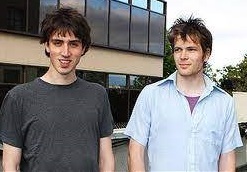
On June 21, 2010 the free Quora site is founded by former Facebook employees Adam D'Angelo (1984-) and Charlie Cheever (1981-), allowing users to pub. their own articles under the guise of answering questions from other users, along with commenting on the answers of others, reaching 300M users per mo. by 2020.
On Mar. 9-15 , 2016 the AlphaGo AI computer program by DeepMind Technologies defeats world 9-dan prof. Go champ Lee Sedol in five games at the Four Seasons Hotel in Seoul, South Korea, proving that people are too stupid to beat computers in fixed-rules games; on Mar. 13 after figuring out its weakness, Sedol wins game #5, but resigns in game #5, losing the match 4-1; in 2017 AlphaGo defeats world Go champ Ke Jie in three games; Deepmind then retires AlphaGo and sells it to Google, developing AlphaGo Zero and AlphaZero; the documentary film AlphaGo by Greg Kohs is released on Sept. 29, 2017; watch trailer; watch movie.
On Sept. 9, 2010 the Here You Have E-Mail Virus attacks major corps. and govt. orgs. incl. Comcast and NASA.

On May 12,2017 the WannaCry cryptoworm is launched, using Microsoft Windows' Server Message Block to infect 230K computers in 150 countries, blackmailing them for bitcoin ransoms; British-born hacker Marcus Hutchins (1994-) of Malware Tech quickly nullifies the program's spread with a kill switch that allows emergency patches to be created and ransoms to be cancelled, becoming a celeb.